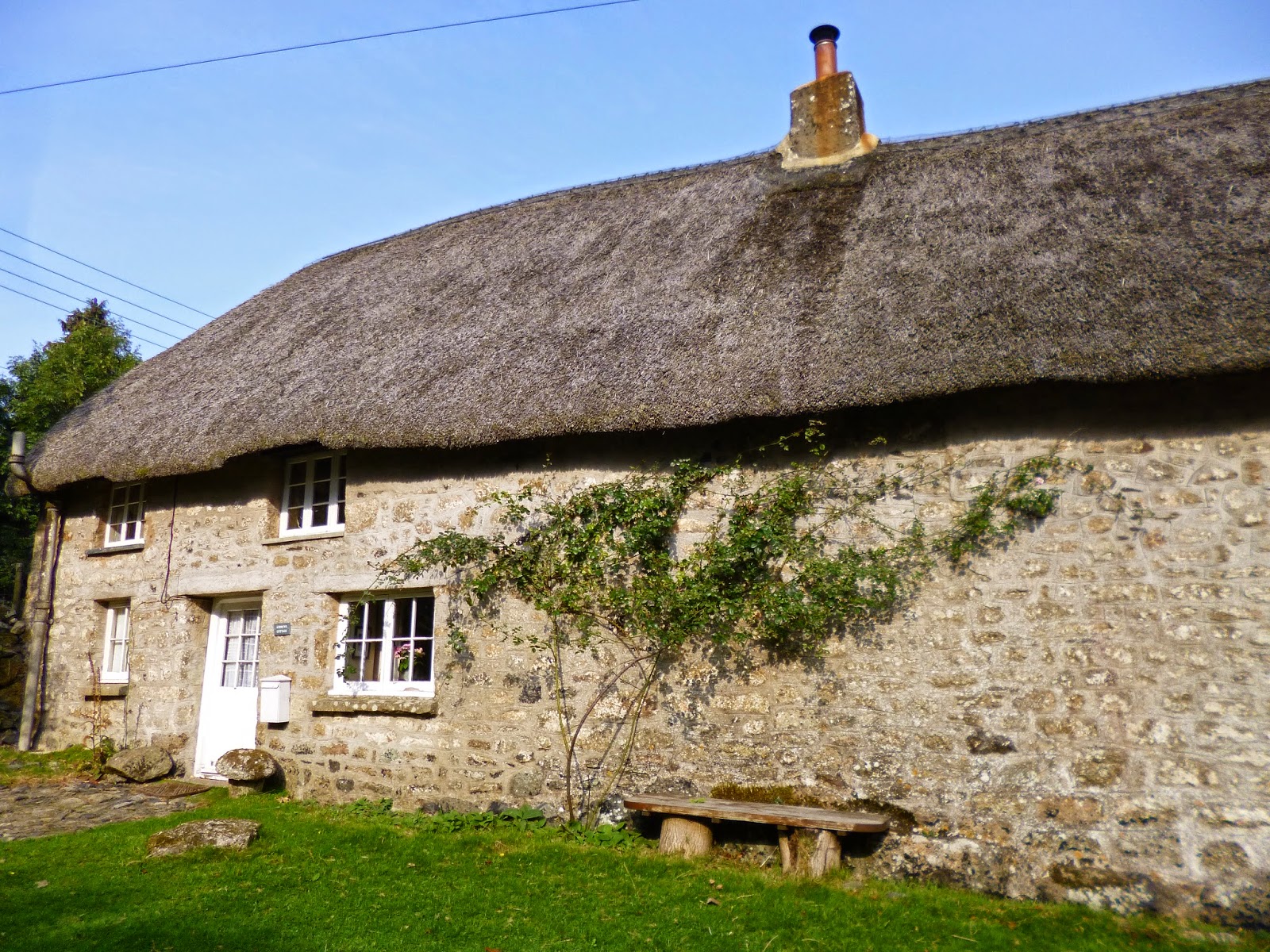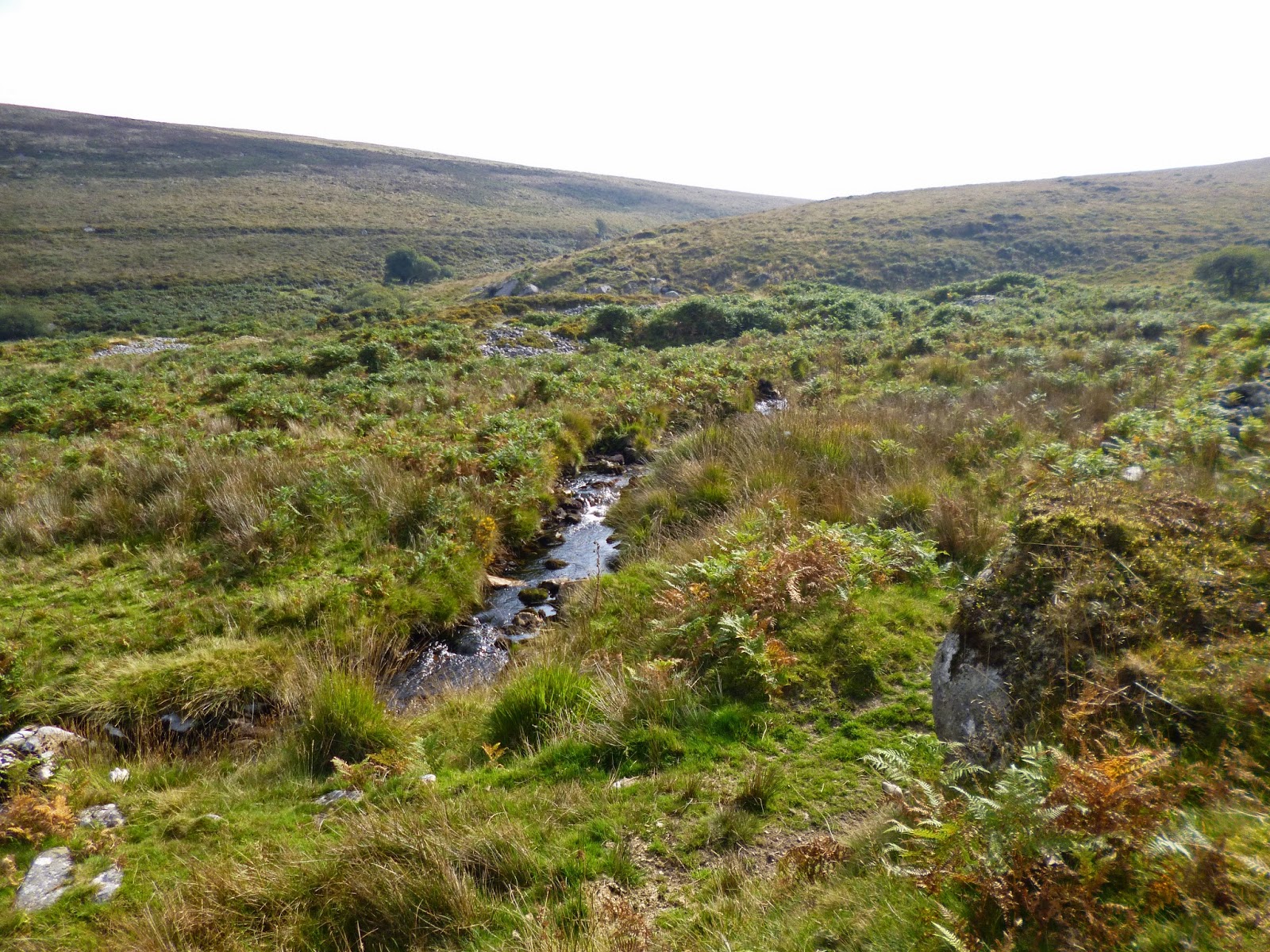Sunday, 28 September 2014
We travelled up to the high moor last week, to Belstone, a pretty sleepy village surrounded by Dartmoor hills.
It was full of lovely long houses with beetling thatched roofs, and tiny paned windows, and gardens full of Autumnal flowers and shrubs covered in berries..
The granite walls around the cottages were full of mossy stone, tiny ferns and the last Welsh poppies in flower.
On the tiny village green was an ancient set of stocks, and around the edge lovely old buildings with interesting pasts.
We followed the path that left the village and eventually were on Belstone common, it was beautiful in the sunshine amongst the granite, ferns and with the huge shoulder of Cosdon across the valley.
After walking for a little while we see a wall that starts near the river`s edge, mounts the hill and continues over the top of the ridge...its the Irishman`s wall, an attempt to enclose the common in the eighteenth century..the story goes that a party of Irishmen built the wall, and the local people allowed them to finish it, then drove them away, and broke down parts of the wall to allow their cattle to graze on the moor to the south.
It is a beautiful part of the moor, quite remote, you don't see many people, but of course there`s always the sheep, and of course ponies, and as we walked we heard a buzzard mewling above the ridge, soaring round and round in the forget me not blue sky...
After a while we left the stony track and headed out over the marsh till we reached the River Taw, a beautiful little river that winds its way over the valley bottom, it gurgled and flowed smoothly between banks of marsh grass and little clumps of gorse, and reflected in it`s crystal water were fluffy clouds and the golden shimmers of the sun...it was so peaceful and still as though the whole moor was holding it`s breath, waiting to see what we would do...
Beside the river are the remains of tinners workings, mounds, gullies and hummocks left by generations of ancient tin miners, and also a lovely old granite boundary stone...
We had intended to climb Steeperton tor which is at the end of the valley, but the red flag was flying on its summit, which meant there was live firing on the moor, probably by soldiers from the Okehampton camp, so we walked down to the foot of Steeperton, following the Steeperton brook which gushed over large boulders and mossy stones, and was edged with ferns and rowan and hawthorn trees..
The going was quite hard with the ground so rough beside the brook, so we headed up the slope to the ridge, the views back over the Taw marsh were beautiful, the great shoulders of the valley either side, with the thin line of the river twisting over the valley floor...
It was hard work climbing the side of the valley too, with the ground very rough, and covered in bracken, we passed a range post too, which shows where the danger zones are on the moor, and where you have to avoid when there`s live firing...unfortunately at this point we were on the wrong side of it, and could hear gun fire in the distance...so when we eventually reached the ridge summit looked down into the valley the other side and could see signs of the soldiers far away..
Although we were in no danger, we headed off in the opposite direction and followed the path that runs the length of the ridge, passing some lovely tors on the way, and with views far below to the farmsteads that dot the moor...
Eventually the path heads down the side of the ridge and turns very rough and stony, and leads down to the East Okement river, where there is a ford, bridge and stepping stones rather a nice little spot with bracken lining the banks in shades of green, brown and yellow and clumps of bright gorse...a herd of cattle were laying amongst the boulders, grazing and wading into the river for a drink..
I think this one was checking the sign to see if there was any reference to cattle...
We walked back to the track which rises over the common, with views to the Belstone tors on our right, and eventually came to a ring of standing stones, called the Nine stones, or Nine Maidens.. there are actually sixteen of them, the legend goes that every day at noon they move, or some say dance. Folklore says that the stones are girls turned to stone for dancing on the Sabbath, but they are in fact the remains of a Bronze Age burial site.
We walked back through the village and had a picnic in the car, it was a good end to a lovely, peaceful walk on a beautiful and favourite part of the moor.
Subscribe to:
Post Comments (Atom)























No comments:
Post a Comment